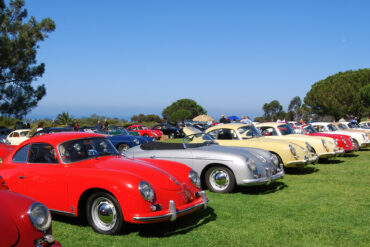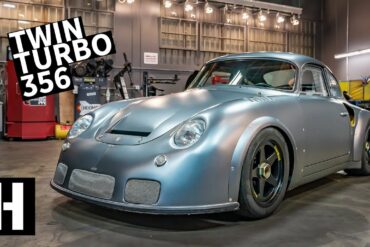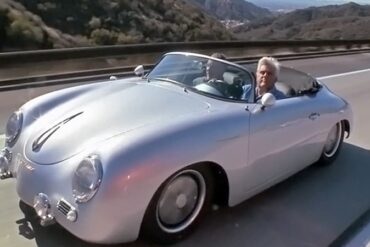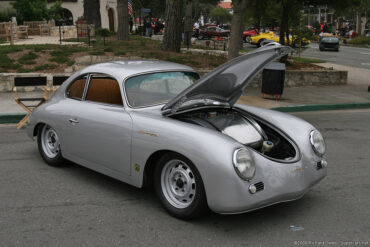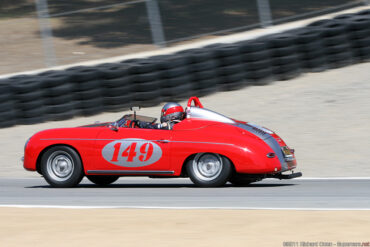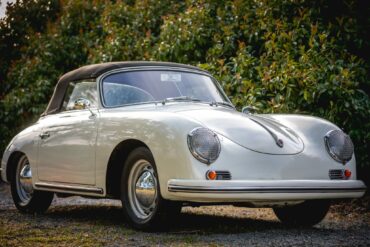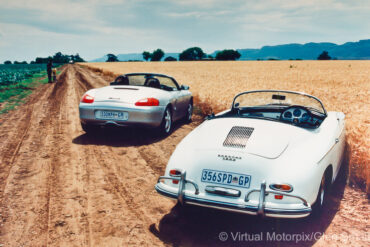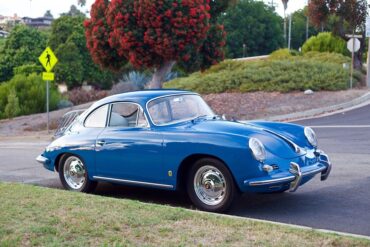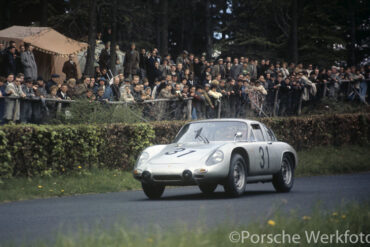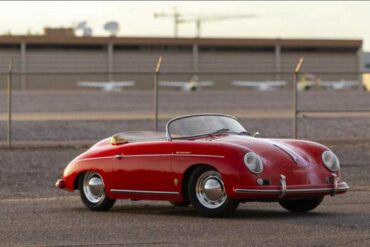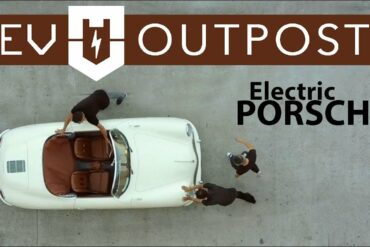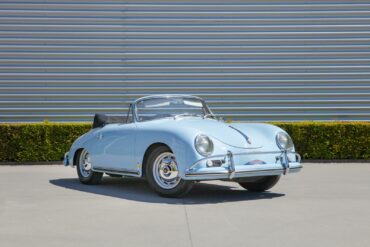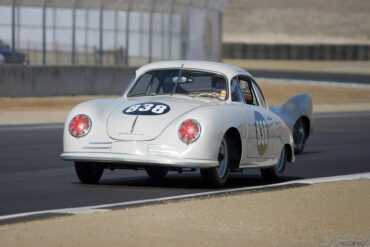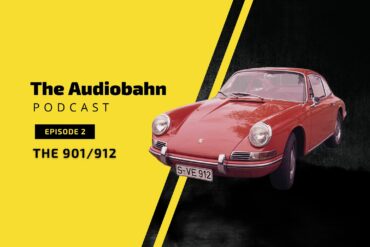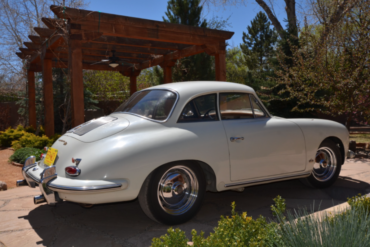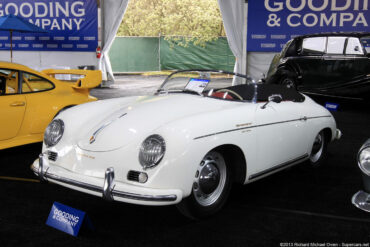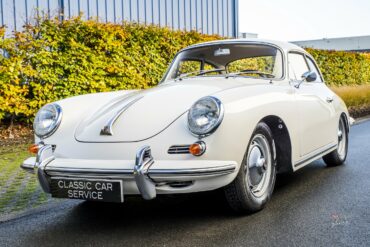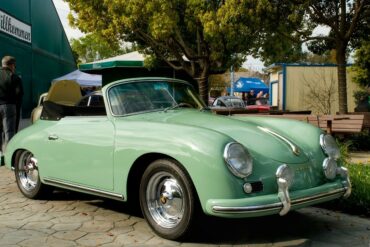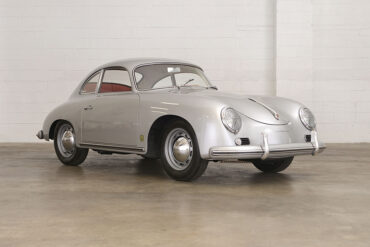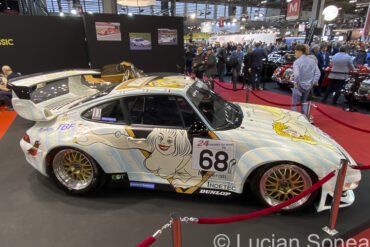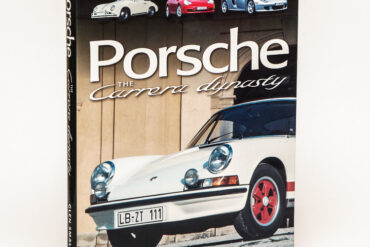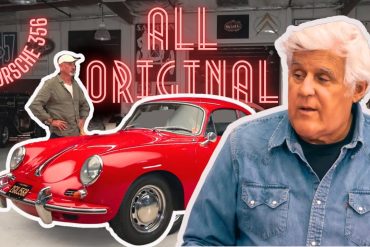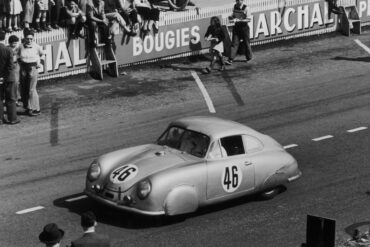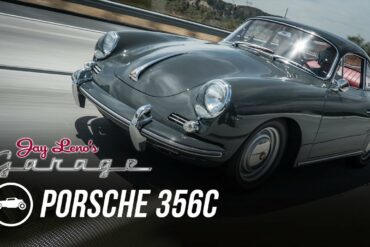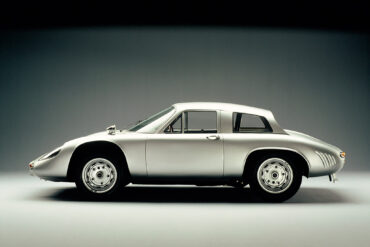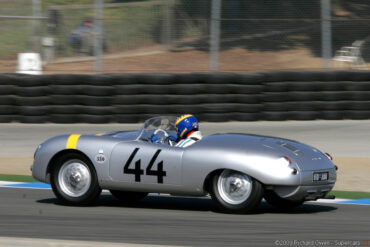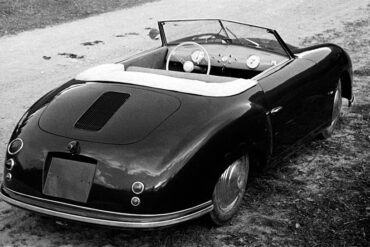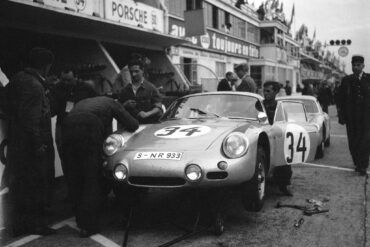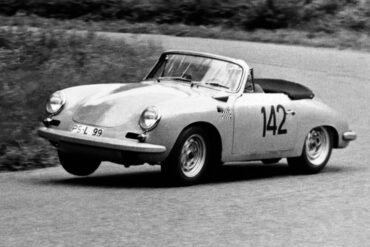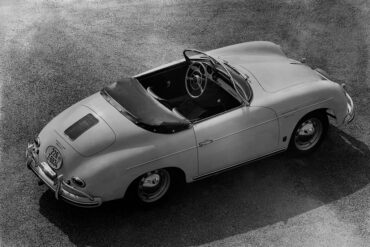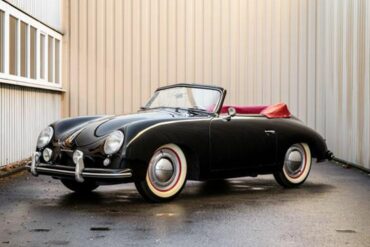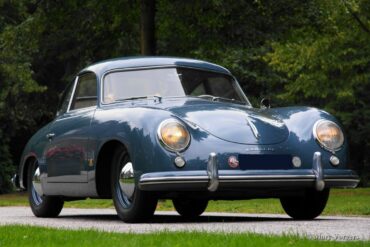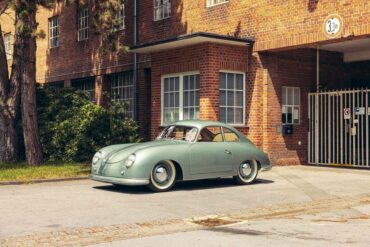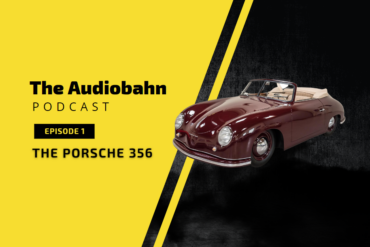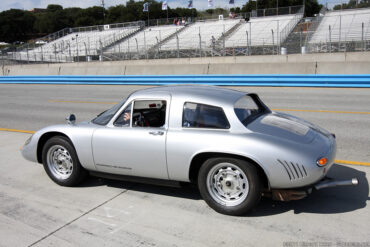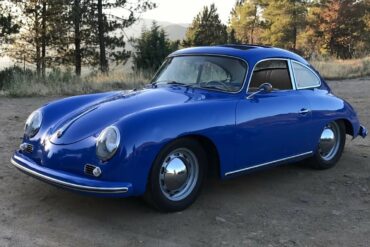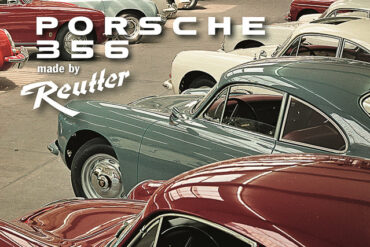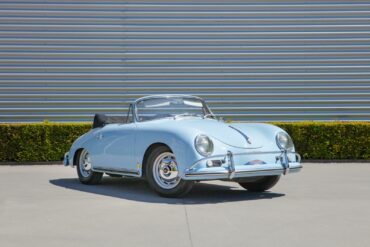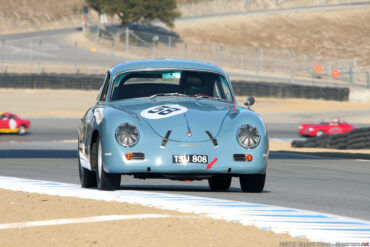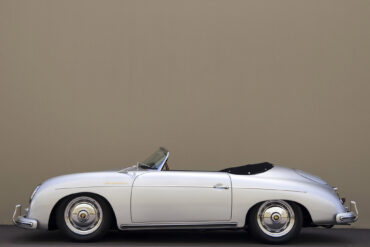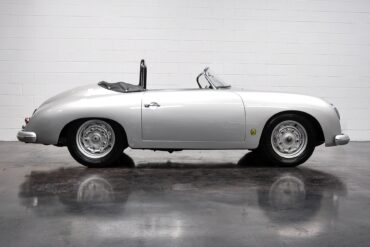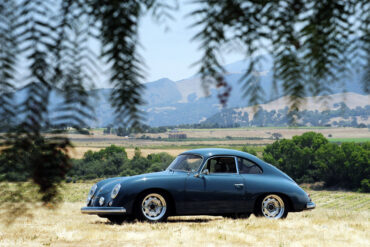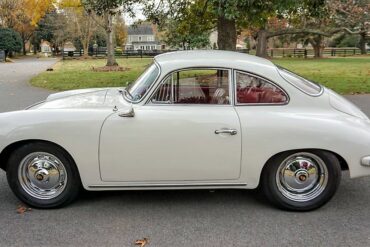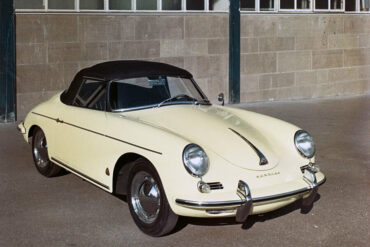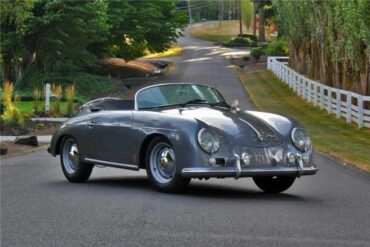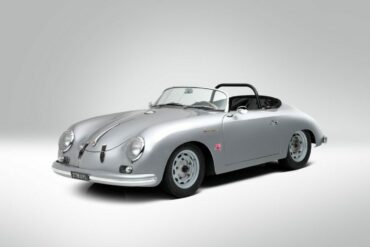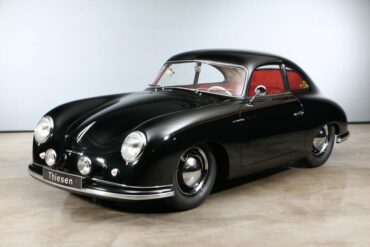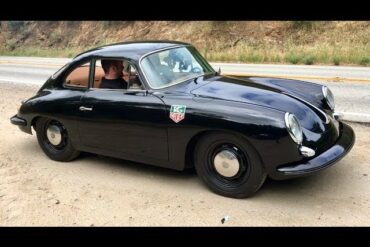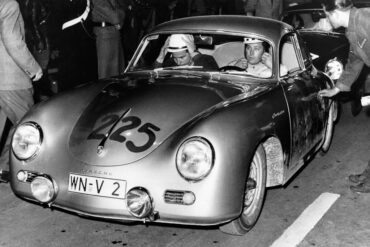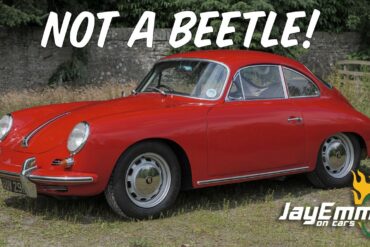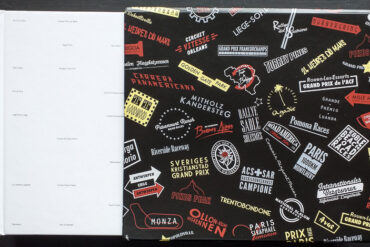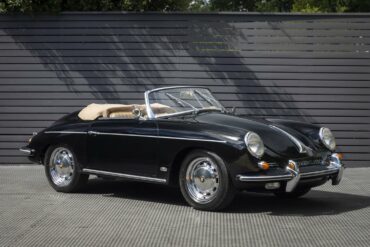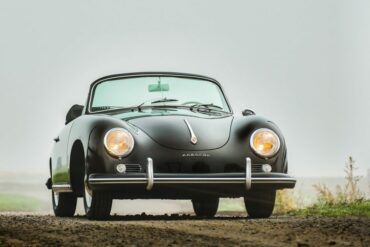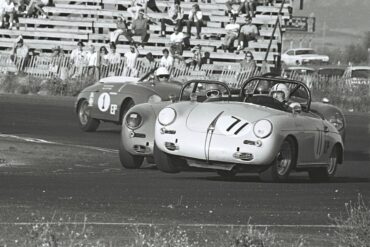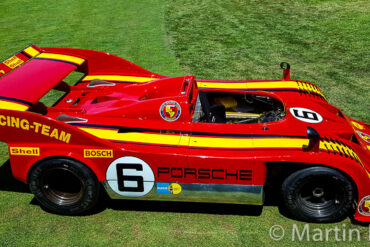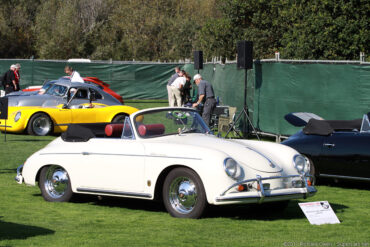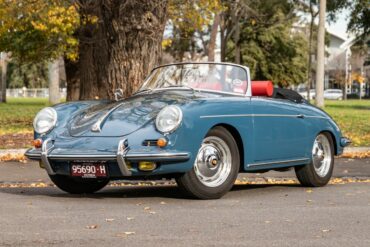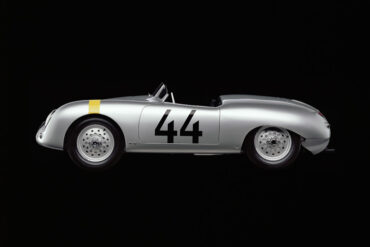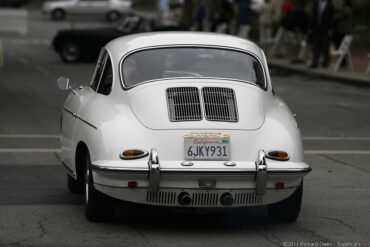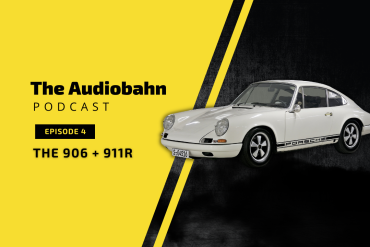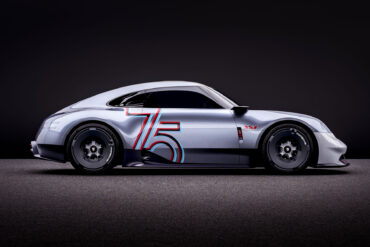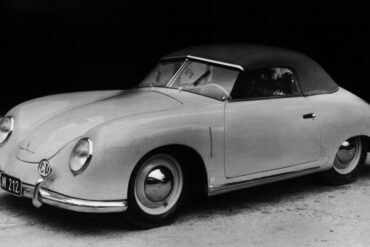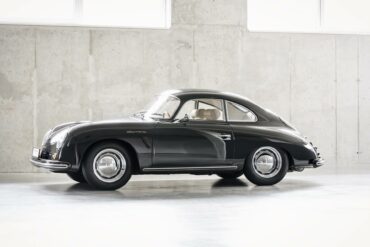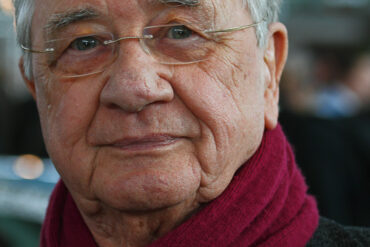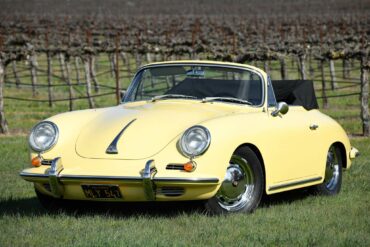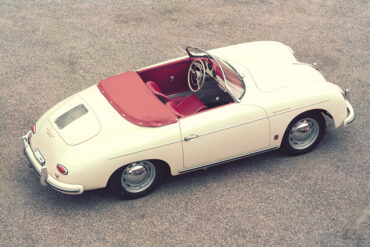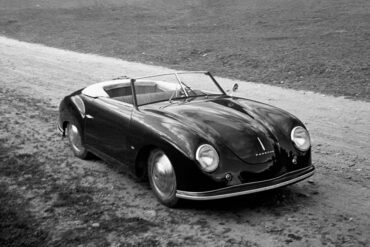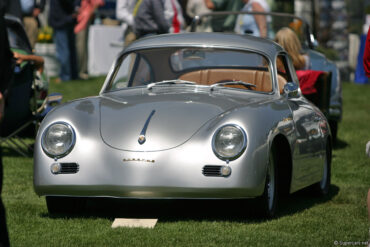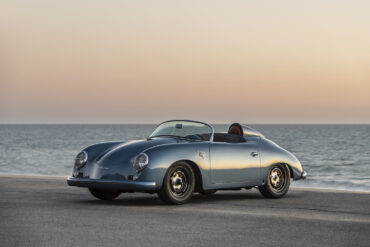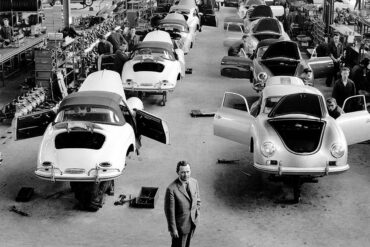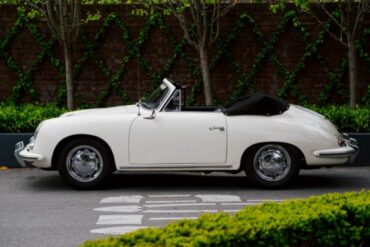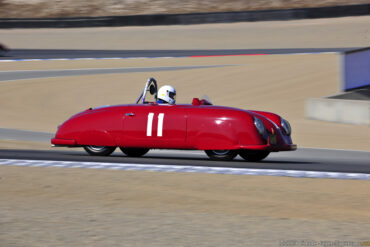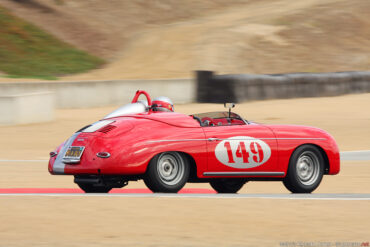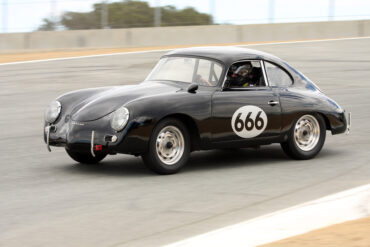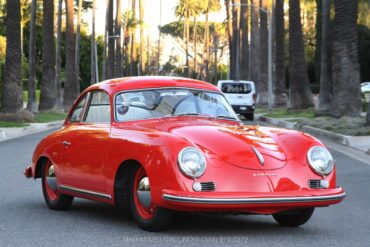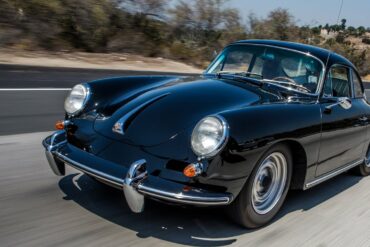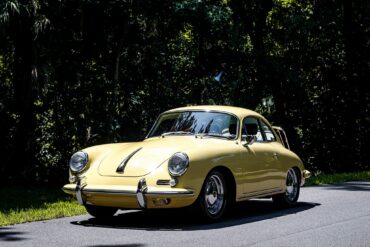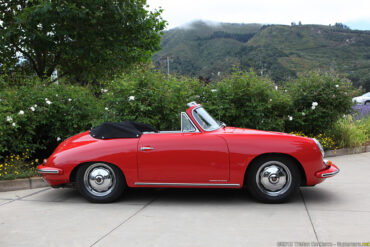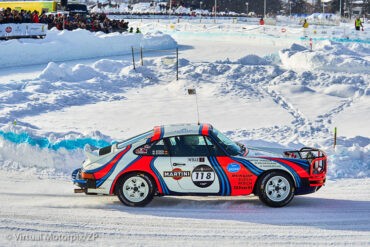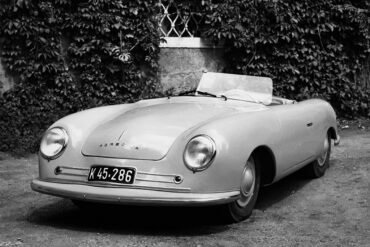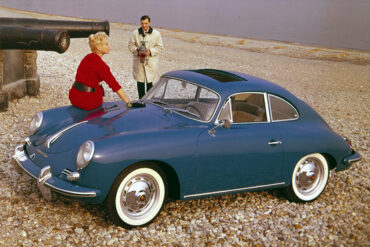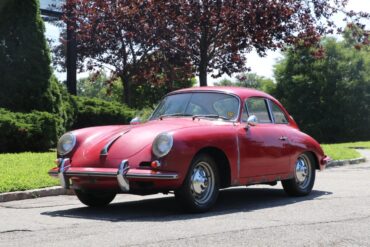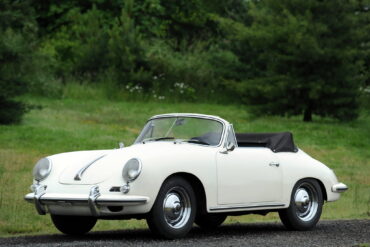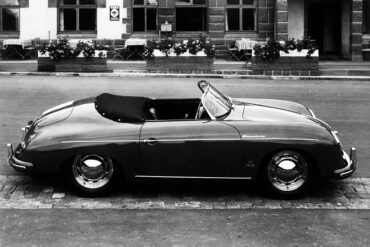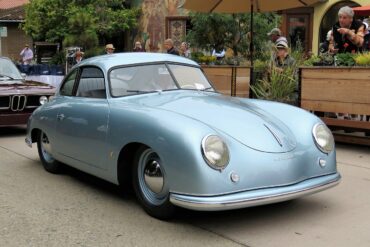Germany? Austria? Japan? To understand where ground zero is for the world’s largest 356-only Concours, let’s first go back to...
Barn Find Porsche Becomes A Twin Turbo Frankenstein Build How we made the 1959 Emory Outlaw RHD Coupe in GT...
1957 Porsche 356A Outlaw Chuck Olenyk turned this coulda-been shoulda-been coupe into a classic speedster with all factory parts –...
1957 – 1958 Porsche 356A/1500GS Carrera GT Coupé Pictures & Gallery...
1959 Porsche 356A/1600 Convertible D Technical Specifications Model Year 1959 Built At Stuttgart, Germany Body Stylist Erwin Komenda Coachbuilder Drauz...
1956 – 1957 Porsche 356A/1300 Super Cabriolet Pictures & Gallery...
A 1997 Porsche Boxster (left) and a 1958 Porsche 356 A Speedster (right) The day dawned bright and clear with...
1959 – 1963 Porsche 356B/1600 S Coupe Technical Specifications Type Series Production Car Production Years 1959 – 1963 Built At...
Porsche – The Golden Years: Leonardo Acerbi © Virtual Motorpix/Glen Smale It is always a pleasure when a top-quality book...
One of the most confused of all Porsche is this DKS or Dreikantschaber. It might appear like a mid-engine RS61 Coupe, but it is a rebodied 356B with a rear-mounted engine. Unlike the earlier 356s, this one featured fared-in driving lights and cut-off greenhouse reminiscent of of the RS61 coupe. Porsche didn't give this new a car a name since it was homologated and considered a Carrera 2 by the FIA. It was nicknamed Dreikantschaber.
1956 – 1957 Porsche 356A/1300 Super Speedster Pictures & Gallery...
How to Convert a Classic into An Electric Car...
1956 – 1957 Porsche 356A/1300 Cabriolet Technical Specifications WHAT BODY STYLE? 2 door fixed-head coupé with 2+2 seats HOW LONG?...
Porsche 356/2 Gmünd Coupé Pictures The rare 356/2 aluminum bodied Porsche Gmünd Coupes are some of the most stunning Porsche case ever...
Episode Two: The Porsche 901/912 Summary Welcome to The Audiobahn, the Stuttcars.com podcast focused on all things Porsche. In our first...
1961 – 1963 Porsche 356B/1600 S Notchback Coupe Technical Specifications Type Series Production Car Production Years 1959 – 1963 Built...
1956 – 1958 Porsche 356A/1500GS Carrera Speedster Pictures & Gallery...
1961 – 1963 Porsche 356B/1600 Notchback Coupe Technical Specifications Type Series Production Car Production Years 1961 – 1963 Built At...
1956 – 1959 Porsche 356A/1600 Cabriolet Pictures & Gallery...
1956 – 1959 Porsche 356A/1600 Coupe Technical Specifications Production Years 1956 – 1958 Released At 1955 Frankfurt Motor Show Built...
1973 Porsche 911 Carrera RS 2.7 Lightweight presented by Serge Heitz Automobile Between 5th and 9th February, the Porte de...
Porsche: The Carrera Dynasty by Glen Smale © Glen Smale A Spanish noun, ‘carrera’ can mean road, track or race...
Porsche is most renowned for the 911, but it was the 356 that first established the German brand’s reputation. In...
In 1950, eleven remaining Gmund chassis were assembled after the factory returned to Germany and converted to SL (Sport Leicht) racing specification. They received 1,086-cc engines, enlarged fuel tanks, louvered quarter-window covers, wheel spats, streamlined aluminum belly fairings, and a pedestal-mounted shifter. Three Type 356/2 cars raced at Le Mans in 1951; two crashed, but 356/2-063 performed flawlessly, winning the 1,100-cc class.
Slate Grey Porsche 356 Dr. Anand Rajani takes Jay through his beloved Porsche, restored by an old friend of Big...
1963 Porsche 356B/2000GS Carrera 2 GT Dreikantschaber Specifications type Racing Car production 2 engine Type 587, Boxer-4 fuel feed Twin...
1952 Porsche-Glöckler 356 Roadster Pictures & Gallery...
Porsche 356/2 Gmünd Cabriolet Pictures Of the 50 cars made in Gmünd, only eight were built up as cabriolets. Each...
In keeping with FIA regulations, Porsche created a new lightweight 356 with help from Abarth. After Porsche had considered numerous Italian companies to manufacture a lightweight 356 body, they settled on Abarth. Franco Scaglione penned the first initial drawings which attempted to reduce frontal area, overall height. Included was an adjustable scoop on the rear deck lid. Made entirely of aluminum, Abarth's body was smaller than the Reutter 356.
As with the earlier versions, the Carrera was offered both in a Carrera GT Deluxe version for the road and the Carrera GT for racetrack duties. Unlike these earlier models, the new car benefited from the 2.0 liter engine introduced as the Carrera 2 was unveiled in September 1962. The 2.0 Carrera used a variant of the Type 547 engine with a larger bore and stoke, having 1966cc.
1956 – 1958 Porsche 356A/1500GS Carrera Cabriolet Technical Specifications Type Series Production Car Built At Germany Coachbuilder Reutter Karosserie Price...
1953 – 1955 Porsche 356/1500 Super Cabriolet (Pre-A) Technical Specifications Type Series Production Car Production Years 1953 – 1955 Built...
1953 – 1955 Porsche 356/1500 Super Coupe (Pre-A) Pictures & Gallery ...
1956 – 1957 Porsche 356A/1300 Coupe Pictures & Gallery...
Episode One: The Porsche 356 Summary Welcome to The Audiobahn, the Stuttcars.com podcast focused on all things Porsche. In our first...
1963 Porsche 356B/2000GS Carrera 2 GT Dreikantschaber Pictures & Gallery...
1956 Porsche 356A is a “Sunroof Coupe” This 1956 Porsche 356A is a “Sunroof Coupe” that has been owned by...
Porsche 356 – Made by Reutter: by Frank Jung © Delius Klasing Verlag When the second edition of this fine...
1954 – 1955 Porsche 356/1300 Super Cabriolet (Pre-A) Technical Specifications Type Series Production Car Production Years 1954 – 1955 Built...
1958 – 1959 Porsche 356A/1600GS Carrera GT Coupé Pictures & Gallery...
1956 – 1958 Porsche 356A/1600 Speedster Pictures & Gallery ...
1956 – 1958 Porsche 356A/1500GS Carrera Speedster Technical Specifications Type Series Production Car Built At Germany Coachbuilder Reutter Karosserie Price...
1954 – 1955 Porsche 356/1300 Super Coupe (Pre-A) Pictures & Gallery...
Porsche 356 Spare Parts Catalogs (1960 – 1965 Model Year) Porsche 356B/356C These official Porsche PET Diagrams and codes for...
1959 – 1963 Porsche 356B/1600 Cabriolet Technical Specifications Type Series Production Car Production Years 1959 – 1963 Built At Stuttgart,...
1956 – 1957 Porsche 356A/1300 Super Speedster Technical Specifications WHAT BODY STYLE? 2 door fixed-head coupé with 2+2 seats HOW...
Despite looking outwardly similar to the preceding models, Porsche thoroughly updated their 356 line in 1956 and called their new model the 356A. At the core, this included a larger 1600 cc engine, but also a curved-glass windshield and a thoroughly revised suspension. At the 1955 Frankfurt Motor Show in September of 1955, Porsche released the 356A/1600 to the world with cabriolet, coupe and speedster bodies from Reutter. The 356A/1600 was a great performer, good for a sprint to 60 mph in 13.5 seconds and hit a top speed of 109 mph.
The Porsche 356 Pre A Coupe and Cabriolet were introduced in 1950 and was available through mid-1955. Beginning in 1950 it was offered with a 1100 cc flat four that produced 40 hp. In 1951, a bigger 1.3-litre Type 506 engine was announced. It marked the first significant move away from the original Volkswagen unit. Bored from 73.5mm to 80mm (stroke was unchanged at 64mm), displacement rose from 1086cc to 1286cc. Further enhancements included lightweight alloy cylinder barrels and nosed pistons. Output rose from 40 bhp to 44 bhp and torque increased from 51 lb-ft to 60 lb-ft.
A father/son project gets driven This is a fully restored 1965 Porsche 356C, the final year of the 356. A...
In May of 1957, Porsche offered two distinct versions of the Carrera, one called the de Luxe for the street and this model, the Gran Turismo, for the track. The main difference between the two models was weight. The Carrera GT was a purpose-built car with little on board amenities. For instance, no heater was fitted giving the car its 'icebox' nickname. Furthermore, the interior was stripped of sound deadening, side windows were replaced by pull-up Perspex units and only simple door panels were fitted.
Porsche 356C Driven In today’s video, we don’t learn much – but we do get to see me go rather...
SportErfolge: by Tony Adriaensens – page photographs by © Virtual Motorpix/Glen Smale Simply titled, SportErfolge (English: Success in Sport), this...
In September of 1959 Porsche revealed their fully updated 356 known as the 356B. This had a completely revised body that was more suitable for the American market. New to the model was the Type 616/7 Super 90 engine which was an indirect replacement for the Carrera de Luxe models. The engine was fully revised with a new intake manifold, a larger Solex 40 PII-4 carburetor and the Carrera air filters.
An Automotive Icon One of the most iconic Porsches of all time is the 356A Cabriolet and now you have...
We have partnered with Sports Car Digest to republish some of their Porsche-centric mcontent on Stuttcars for our members to...
Plenty of 911-based cars were entered in the Concours The Hillsborough (California) Concours d’ Elegance, on 21 July 2019, has...
1956 – 1959 Porsche 356A/1500GS Carrera Cabriolet Pictures & Gallery...
1959 – 1963 Porsche 356B/1600 Super 90 Roadster Pictures & Gallery...
Successful VW Dealer and racer Walter Glöckler built several specials for the German Car Championship including this roadster. It was built with assistance from Porsche in Zuffenhausen and raced without its optional hardtop in the 1952 champion before being shipped overseas for SCCA racing. Weidenhausen created the body from aluminum with a nose that bore close resemblance to the 356 Porsche but had semi-skirted rear wheels and cutaway rear corners similar to Glockler-Porsche 1 and 2.
1962 – 1963 Porsche 356B/2000GS Carrera 2 Coupe Technical Specifications Type Series Production Car Built At Germany Engine Type 548...
Episode Four: The Porsche 906 & 911R Welcome to The Audiobahn, the Stuttcars.com podcast focused on all things Porsche. In our...
Remembering Porsche’s first model, the 356 Seventy-five years ago, on June 8, 1948, the 356 No. 1 Roadster became the...
1954 – 1955 Porsche 356/1300 Split-Window Cabriolet (Pre-A) Pictures & Gallery...
Available in all body styles, the Porsche 356 A Carrera featured the race car-derived 1500 cc four-cam engine (type 547) developed for the Porsche 550 Spyder. Rated up to 110 hp, it was the top performance 356 A model available. Variants included the Carrera 1500GS and Carrera 1500GT, differentiated by their horsepower. In 1958, Porsche updated the Carrera engines (now type 692), increasing the displacement up to 1600 cc and output increased to 105 and 110 hp respectively. In 1959 horsepower for the GT increased again to 115.
Hans Herrmann at the Retro Classics in Stuttgart, Germany 2010 Hans Herrmann, one of the most successful and popular racing...
1964 – 1965 Porsche 356 SC Cabriolet Technical Specifications Model Years 1964 – 1965 Built At Stuttgart, Germany Engine Flat-4...
1956 – 1958 Porsche 356A/1600 Speedster Technical Specifications Production Years 1956 – 1958 Released At 1955 Frankfurt Motor Show Built...
Of the 52 cars made in Gmünd, only eight were built up as cabriolets. Each was outsourced for its body and interior construction. Six cars were sent to Beutler who constructed them with a slightly different shape than the factory coupes. Included was a kicked-up rear fender line which was used on several of the Buetler cabriolets.
Following the Pre-A prototypes and a run of quad-cams with the 1500cc engine, the 1600 Carrera GT was a performance 356 that used a larger version of the Porsche 550 Spyder's potent engine. As early as 1958, some Carreras were fitted with a larger engine known as the Type 692. The new unit featured a larger displacement which was better suited for the 1600cc class. Furthermore, it was improved considerably adopting plain bearings and new ignition system.
Episode Three: The Porsche 911 T, 911 L, & 911 S Summary Welcome to The Audiobahn, the Stuttcars.com podcast focused on...
Shifting the Recipe a Bit Rod Emory of Emory Motorsports has revealed the 1959½ Speedster. It’s the latest evolution of...
The world of early Porsche production This footage was taken between late 1959 and late 1961. Great view into the...
1959 Porsche 356A/1600GS Carrera de Luxe Coupé Pictures & Gallery...
1964 – 1965 Porsche 356 C 1600C Cabriolet Technical Specifications Model Years 1964 – 1965 Built At Stuttgart, Germany Engine...
When Porsche went to Le Mans, they reverted to aluminum shells made at their first factory in Gmünd, Austria. Three of these coupes, called 356 SL, raced Le Mans. All three Le Mans cars were shipped to America by Max Hoffman and sold to Fritz Kosler, Ed Trego and John von Neumann for SCCA racing. Before the 1952 races at Torrey Pines, von Neumann had Emil Diedt remove the coupe's roof, creating in effect the first Carrera Speedster.
1959 Porsche 356A/1600 Convertible D Pictures & Gallery...
1956 – 1959 Porsche 356A/1600 Coupe Pictures & Gallery...
1954 – 1955 Porsche 356/1300 Split-Window Coupe (Pre-A) Technical Specifications Type Series Production Car Production Years 1954 – 1955 Built...
1963 Porsche 356 Carrera 2. When Jay was lucky enough to acquire what he calls “one of the most beautiful...
1964 – 1965 Porsche 356 SC Coupe Technical Specifications Model Years 1964 – 1965 Built At Stuttgart, Germany Engine Flat-4...
1962 – 1963 Porsche 356B/2000GS Carrera 2 Pictures & Gallery...
Ice Races GP, Zell am See, 19-20 January 2019: #118 Porsche 911 SC driven by Michael Stock After a 45-year...
Porsche 356/1 Pictures Today we call the first mid-engined Porsche roadster as 356/1 (or 356 no. 1) to distinguish it...
The 356 B T5 Coupe was the direct replacement of the Porsche 356 A Coupe. The T5 Coupe bodies were produced by German coachbuilder company Reutter. The 356 B T5 Coupe played a huge role in the growth seen by Porsche in the early 1960s. Like the Cabriolet, Roadster, and Notchback Coupe siblings, the Coupe was offered with 1600, 1600S, S90, and Carrera engine options paired to a four-speed synchromesh 741 transmission. In late 1961, Porsche introduced the T6 body and updates, which built on the success of its very popular predecessor.
1961 – 1963 Porsche 356B/1600 Super 90 Notchback Coupe Technical Specifications Type Series Production Car Production Years 1961 – 1963...
1959 – 1963 Porsche 356B/1600 Super 90 Cabriolet Pictures & Gallery ...
An export hit, built in response to customer demand: the American importer Max Hoffman requested a Porsche costing less than 3,000 dollars for his market. The 356 Speedster was the answer, naturally with a spartan equipment specification. But the lightweight car was a big hit in the USA. It was used mainly for motor racing and soon became a regular feature of the motor sport scene.
1951 – 1953 Porsche 356/1300 Split-Window Coupe (Pre-A) Pictures & Gallery...
No More Content


